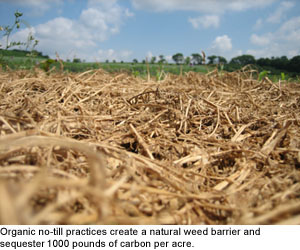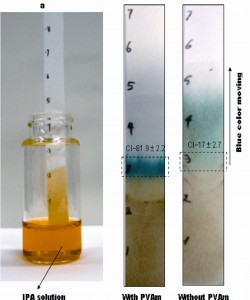14
Dec
Report Shows Overuse of Disinfectants Is Harmful
(Beyond Pesticides, December 14, 2009) A new report links disinfectant chemicals with chronic illnesses and conditions such as asthma, hormone imbalance, and immune system problems. The report, Disinfectant Overkill: How Too Clean May Be Hazardous to Our Health, was released by the national environmental health group Women’s Voices for the Earth (WVE), and cites more than 40 peer-reviewed reports and scientific studies that document the health impacts of chemicals found in household disinfectants. Chemicals reviewed in the report include chlorine bleach, ammonia, triclosan and triclocarban, ammonium quarternary compounds, and nano-silver.

“Companies are working hard to convince consumers, and especially moms, that they need to regularly disinfect every surface in their homes to protect their families from illness. But that’s simply not true and it may not be healthy,” says WVE staff scientist and report author Alexandra Scranton. “We’re encouraging consumers to go back to basics for cleaning, with less of a focus on disinfection and more on non-toxic cleaners and a little elbow grease.”
According to the Centers for Disease Control and Prevention (CDC), frequent hand washing with hot water and regular soap is the best way to prevent infection and illness.
“Antimicrobial chemicals available in the home today were initially developed for hospital and clinical settings, but for the vast majority of people, the home does not need to be as sterile as an operating room,” Says Susan Luck, RN, director of the Integrative Nursing Institute.
Disinfectants tend to kill a wide variety of bacteria, reducing both “bad” bacteria associated with illness, as well as the “good” bacteria that perform useful functions in our environment and in our bodies. The overuse of antimicrobial chemicals has also been linked to the creation of drug-resistant bacteria, or “superbugs,” which are bacteria and viruses that have become resistant to the antimicrobial compounds and antibiotic drugs developed to control them.
“Even when used as directed, these chemicals inadvertently end up polluting our bodies and our environment,” says Ann Blake, PhD, University of California Berkeley Extension Instructor. The report cites a study that found that microbes in lake water adapted and became resistant to some ammonium quaternary compounds, a family of chemicals commonly found in disinfectant sprays and toilet cleaners.
Regulated by both the FDA and EPA, triclosan is an antibacterial used in hundreds of common consumer products such as soaps, cosmetics, deodorants, toys, and even clothing. According to the triclosan factsheet in the Fourth National Report and Human Exposure to Environmental Chemicals, released in December 2009, the National Health and Nutrition Examination Study (NHANES) finds triclosan in the bodies of nearly 75 percent of people tested. Studies show the two chemicals may have hormone-disrupting effects, which means they change the activity of hormones in the body. For example, triclocarban appears to amplify testosterone in the body, while triclosan has been shown to interfere with communication between cells in the brain and the heart.
A U.S Geological Survey (USGS) study found that triclosan is one of the most detected chemicals in U.S. waterways and at some of the highest concentrations, because it is so frequently used in households and washed down the drains.
Other studies have found that due to its extensive use in consumer goods, triclosan and its metabolites are present in fish, human milk, serum, urine, and foods. Further, the pesticide can also interact with other chemicals to form dioxin and chloroform, thereby exposing consumers to even more dangerous chemicals.
At its annual convention this past summer, the Canadian Medical Association called on the federal government to ban the sale of household antibacterial products such as those containing triclosan.
In July of this year, Beyond Pesticides and Food and Water Watch submitted an amended petition to the United States Food and Drug Administration (FDA) requiring that the agency ban the use of the controversial pesticide triclosan for non-medical applications on the basis that those uses violate the Federal Food, Drug and Cosmetics Act.
In addition, nanosilver has been promoted for its antibacterial properties and is used in many products such as sporting goods, band-aids, clothing, baby and infant products, and food and food packaging. However, very little is known about where these particles end up when such products are put to use. Many consider silver to be more toxic than other metals when in nanoscale form and that these particles have a different toxicity mechanism compared to dissolved silver. Scientists have concluded that nanoparticles can pass easily into cells and affect cellular function, depending on their shape and size. Preliminary research with laboratory rats has found that silver nanoparticles can traverse into the brain, and can induce neuronal degeneration and necrosis (death of cells or tissue) by accumulating in the brain over a long period of time.
Disinfectant Overkill also contains information on how to reduce usage of disinfecting products as well as suggestions for non-toxic cleaning alternatives. Disinfectants are a growing sector of business for cleaning product manufacturers. The industry has seen significant growth in recent years, and analysts project that the global disinfectant market will reach $2.5 billion by 2012.
To download Beyond Pesticides factsheet What’s the right answer to the germ question? or for more information, including tips on how to get toxic antimicrobials out of your home, school, office or community, visit Beyond Pesticides’ Antimicrobials program page.


















